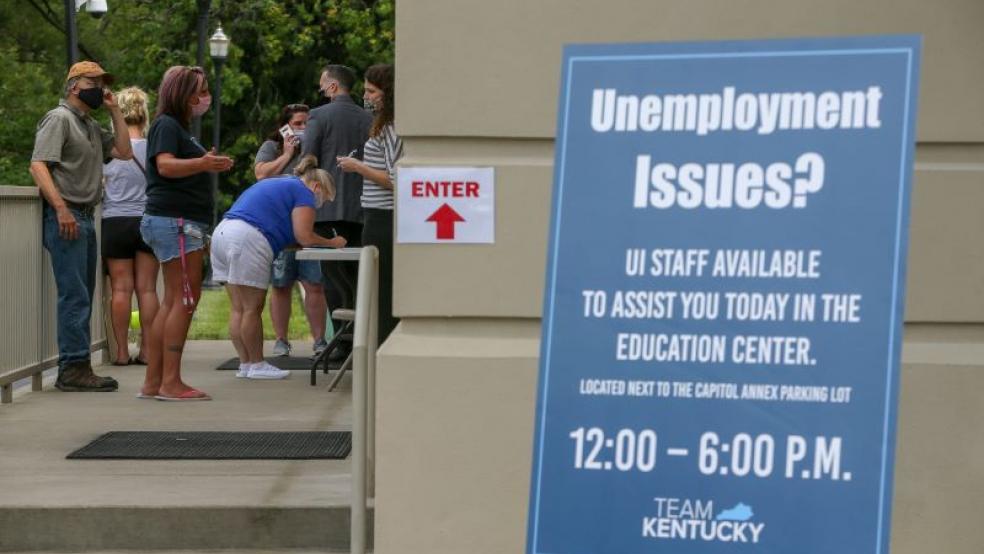There are officially 10.1 million unemployed people in the U.S. right now, according to the Labor Department’s latest monthly jobs report, but some economists think the true number is considerably higher than that.
As The Washington Post’s Heather Long highlights Friday, about 18.3 million people are currently receiving some kind of unemployment assistance, according to the weekly jobs report, with that number hovering near 20 million for months.
What explains the enormous gap between the two data points? Understaffed and poorly equipped state unemployment offices are a big part of the story, Long says. Most states have been overwhelmed by the surge in jobless filings since the pandemic began, and some have processed unemployment claims in irregular batches, severely distorting the weekly reports with data that stretches back weeks or even months. As Long puts it, one person’s claims for 20 weeks of unemployment can look like 20 people in one week when claims are processed all at once.
Fraud is another factor, with the temporary Pandemic Unemployment Assistance program coming under special scrutiny. Congress created the PUA last year to help workers who don’t usually qualify for unemployment aid, including the self-employed and gig workers. But the program has been marred by fraud, and the resulting investigations have sent the weekly numbers bouncing all over the map. Ohio, for example, reported 10,156 new PUA claims two weeks ago and then 232,016 last week, with the variation probably driven by reporting issues rather than enormous swings in real-world joblessness.
A third factor, Long says, is the fact that some people getting unemployment aid have jobs, though they’re part-time.
Alternative estimates: Some economists have created their own estimates to get closer to the true number of unemployed. Fed Chair Jay Powell said last week that he thinks the unemployment rate is close to 10%, which would put the number of jobless at about 16 million. Former Obama administration economist Jason Furman estimates that there are about 13.3 million unemployed, while former CBO chief Douglas Holtz-Eakin, who led President George W. Bush’s Council of Economic Advisers, thinks the 10 million figure is about right, given the decline in the employment-to-population ratio in the wake of the pandemic.
Heidi Shierholz, a former Labor Department economist now with the liberal Economic Policy Institute, offers a much higher estimate of nearly 19 million unemployed, derived from the number of officially unemployed (10.1 million), those who dropped out of the labor force (5.3 million), and those who are misclassified or non-responsive to surveys (3.5 million). Add the people who have seen cuts to their income (6.8 million), and the total of those negatively affected economically by pandemic comes to 25.5 million.
The bottom line: There’s a good chance that the official unemployment numbers are missing a considerable number of people, with the shortfall potentially running into the millions. But the speed and severity of the Covid-19 pandemic have made that number harder to calculate, and without a comprehensive, national, real-time reporting system, policymakers will have to muddle through with a range of estimates and a higher than usual degree of uncertainty.




